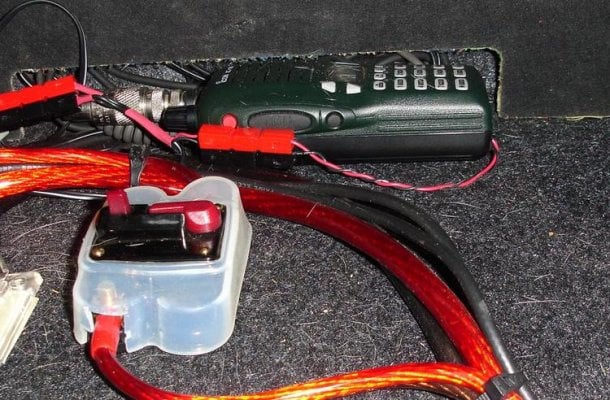Ham Radio
Scott, great on ordering the V8, you'll have fun with it.
The world of ham radio is limited only by your personal commitment and your bank account. I would recommend, for any real emergency communications capability, to get at least a General Class ham license and a radio capable of HF operation. There are, depending on
where you live, usually ham radio clubs that give free classes on getting a license. Some commercial classes are also available, and are usually given over a weekend with the test at the conclusion of the class. Most guarantee you’ll pass, and 99% do. If you fail, you can take the class again at no cost. A General Class license will give you voice privileges on all the ham bands that permit it, including the HF bands. It’s the HF bands that are capable of world-wide communications, even from a vehicle down in the bottom of a canyon somewhere.
An example of a small mobile VHF/HF radio that fits easily in vehicles is the Yaesu FT-857D. They can be purchased new for about $685. and used on eBay for around $500. The radio offers everything you need for world-wide communications in a small package. The receivers cover
.1 to 56mhz, 76-110mhz, 118-164mhz, 420-470mhz. With the simple removal of a couple diodes, the radios will transmit on all of the above listed frequencies with the exception of the 76-110mhz band.. Transmitter power output is 100 watts .1-60mhz, 50 watts 118-164mhz, 20 watts 420-470mhz. The radio is capable of the following operating modes: A1 (CW), A3 (AM), A3J (LSB/US

, F3 (FM), F1 (9600 bps data), and F2 (1200 bps data). Kind of a “do everything” radio in a very small box. While the above description is of a Yeasu radio, Icom, and Kenwood also make comparable VHF/HF mobiles, and they are all great.
As someone pointed out in an earlier post, in a life-threatening emergency, you can transmit on any frequency without a license. I have an FT-857 installed in my truck and have many non-ham frequencies programmed into it. I have all the VHF Marine frequencies, all the CB channels, all the FRS frequencies, a couple law enforcement agencies, several Dept of Forestry channels, all four of our local towered airports, the unicom freqs of a couple local non-towered airports, plus a few more I cant remember sitting at my desk in my office. Of course it also has all the local 2meter and UHF ham repeaters programmed.
As you can guess, I’m a proponent of ham radio. I’m 65 now and have been a ham 50 years. I’ve seen ham radio save many lives, pass thousands of health and welfare messages, coordinate rescues, and handle tens of thousands of messages home from servicemen. While some may think
ham radio is an anachronism in this world of the internet and cell phones, when all those other forms of communications fail, and fail they will, ham radio gets through.
Soap Box Mode: OFF




 . Welcome to ham radio...you're going to have a great time...
. Welcome to ham radio...you're going to have a great time...